How to Turn Off Windows Update in Windows 10
On Windows 10, Microsoft no longer integrates the option to turn off updates completely, but the update process will take place automatically. Now to turn off Windows 10 update, prevent Windows 10 from automatically updating or turn off the automatic update feature on Windows 10, you will have to do it manually.
For most users, Windows Update will slow down the system, can cause incompatibility errors, when you need to shutdown, you have to wait for Windows to update for a long time and it's frustrating… Below of TipsMake.com will guide you. Guide you how to turn off the automatic update feature on Windows 10! Because Windows 10 is constantly updating, if method 1 doesn't work, you can try methods 2, 3…
Quick look at how to turn off Windows 10 update
1. Turn off updates on Windows 10 with services.msc
I always use this method to turn off Windows 10 updates, tested on Education and Pro versions are OK, but it has the disadvantages I mentioned below, you should do it in combination with method 2 for the best effect.
To turn off updates on Windows 10, follow these instructions:
Step 1: Press Windows+CHEAP to open run > type services.msc > press Enter or press Windows+E and paste the following path in the path bar:
Control PanelAll Control Panel ItemsAdministrative Toolsservices 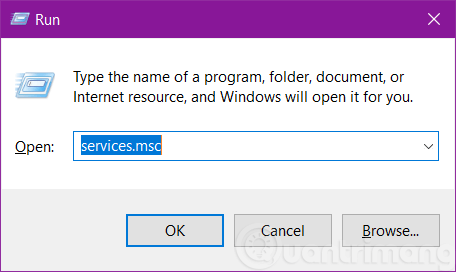
Step 2: Find the section Windows Update (scroll down near the bottom), double click it to open the window Properties.
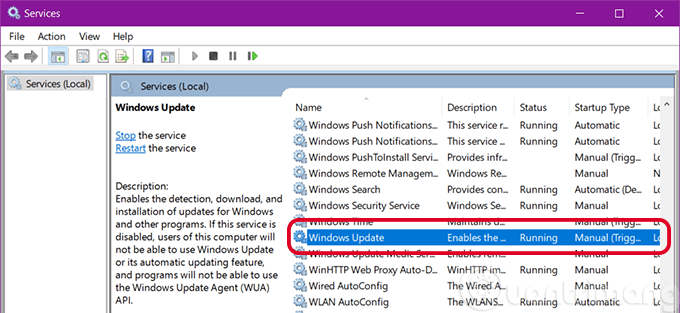
Step 3: At tab General, Press Stop under Service status, then find Startup type > click the arrow in the box and select Disabled.
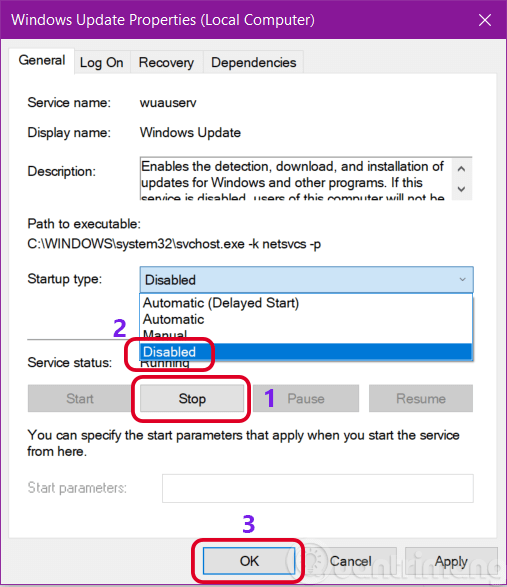
Step 4: Press OK To save changes, restart the machine and check the Windows Update feature again.
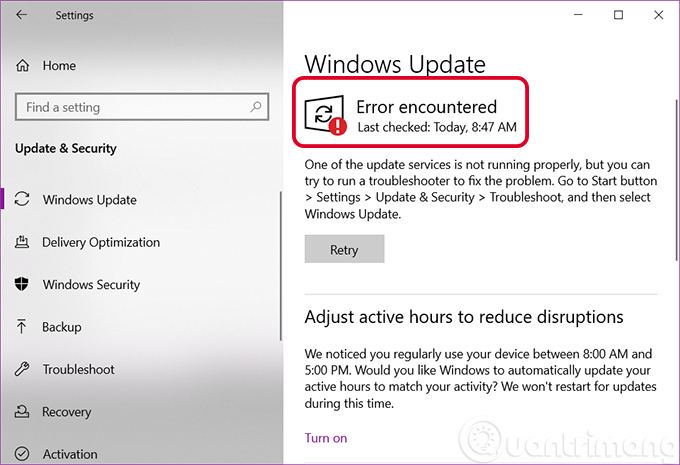
Note: If you do it this way, Windows Defender cannot be updated anymore, it will be quite dangerous if your computer does not install any additional anti-virus software for Windows. If you just want to delay updating Windows 10 in the Startup Type you can choose Manual to update manually (an update is available but you have to manually click install) or select Automatic (Delayed Start) to wait until there is a complete update, then choose. Then Windows 10 will allow you to postpone updates for 3 days, every 3 days you will choose to delay further.
On Windows 10 Pro and Education, some of you reported that method 1 cannot, it still updates itself, I have tried combining method 1 with method 2 below, it's ok. If you have a similar situation, you should do both method 2.
2. Turn off Windows 10 updates with Group Policy Editor
To turn off automatic updates on Windows 10, you follow the steps below:
- Open Group Policy Editor, press the . key Windows + CHEAP to open the Run command window, then type gpedit.msc go there then press Enter. If you are using Windows 10 Home, you may not be able to find Group Policy Editor, follow method 1 or activate Group Policy Editor for Win 10 Home.
- On the Group Policy Editor window, navigate to the key:
Computer Configuration > Administrative Templates > Windows Components > Windows Update - Find Configure Automatic Updates, double click on it and select disabled, then proceed to save the changes and you're done.
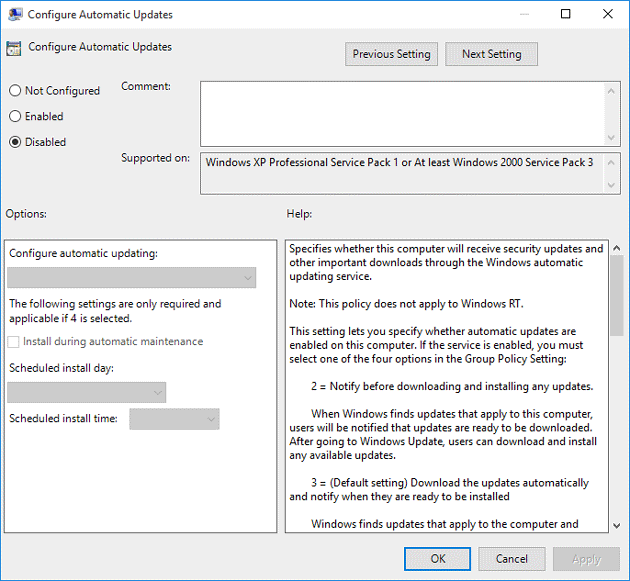 How to turn off Windows updates using Group Pololicy Editor
How to turn off Windows updates using Group Pololicy Editor
You can follow how to turn off Windows 10 update in the animation below:
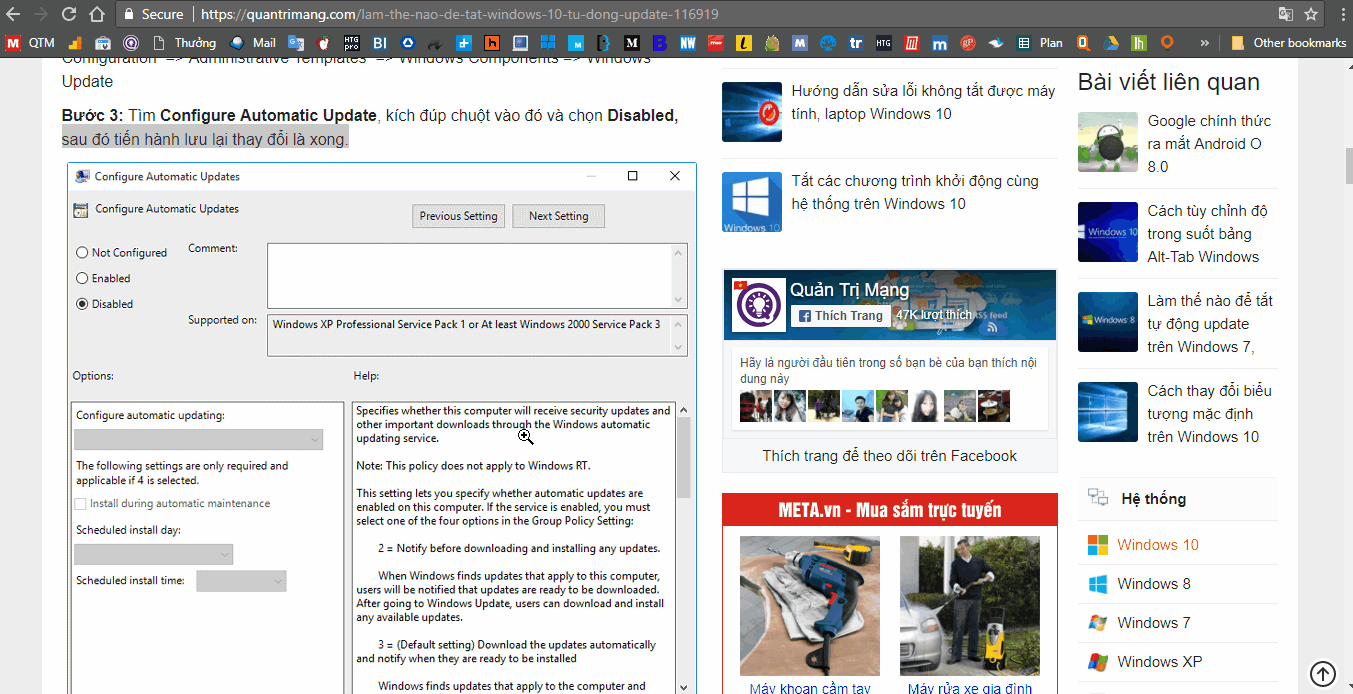
3. Use EaseUS Tools M to block Windows 10 updates
If you want to block Windows 10 updates with just one click, you can try the free tool EaseUS Tools M. This tool allows you to enable/disable Windows Update, fix hard drive errors, erase/activate write-protection… in seconds.
The steps are as follows:
- Download EaseUS Tools USA and install it on your computer. This tool has been tested by Quantrimang on Virus Total and does not detect viruses
- Link to download EaseUS Tools US
- To install EaseUS Tools USA you just need to double click on the file
toolsm.exejust downloaded then press next and wait to press finish it's done
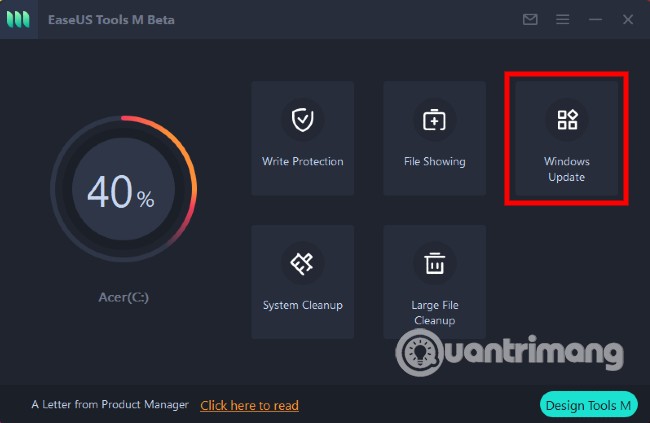
- Next, run EaseUS Tools USA and access to Windows Update
- The tool will automatically detect the status of the Windows Update service. If Windows Update is on, click Disable to block updates
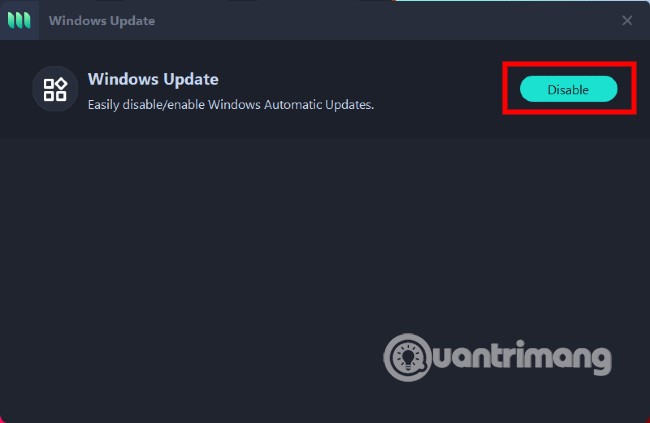
- To check if EaseUS Tools USA is it really working or not you can press the button Windows then type Services. Right click on Services and choose Run as administrator
- In the list of services, you find and right-click Windows Update then choose Properties. You will see this service is being stopped
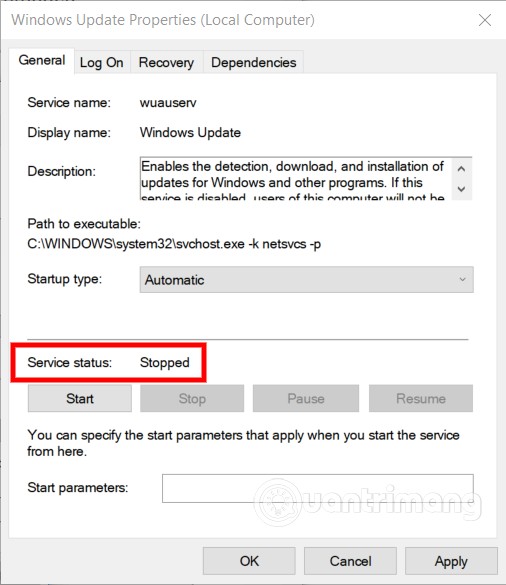
You can also use EaseUS Tools M to clean your computer. This tool supports deleting junk files, temporary files to free up space as well as speed up the computer. In addition, it can also help you find and delete large files. Other features of EaseUS Tools M include hard drive fix, erase/enable write-protection.
4. Block Windows 10 from updating for 365 days
In the Registry on Windows 10 1803, 1809, 1903, 1909 and 2004, there is an option that allows you to select the specific version of Windows you want to use. That is, you can modify the Registry and have your device use a specific version of Windows 10, as long as that version is still supported by Microsoft.
Additionally, the 'TargetReleaseVersionInfo' entry in the Registry also allows users to disable downloading of feature updates for up to 365 days. If you want to use a specific version of Windows 10, you can follow these steps to change the Registry:
- Press Windows + CHEAP, import regedit.
- Navigate to
HKEY_LOCAL_MACHINESOFTWAREPoliciesMicrosoftWindowsWindowsUpdate - Right click on "Windows Update".
- Choose "new".
- Choose "DWORD (32-bit) Value"named TargetReleaseVersion.
- Set the value of "TargetReleaseVersion" Fort first.
- Right click on the folder "Windows Updatee" again.
- Choose "new" and click "String Value".
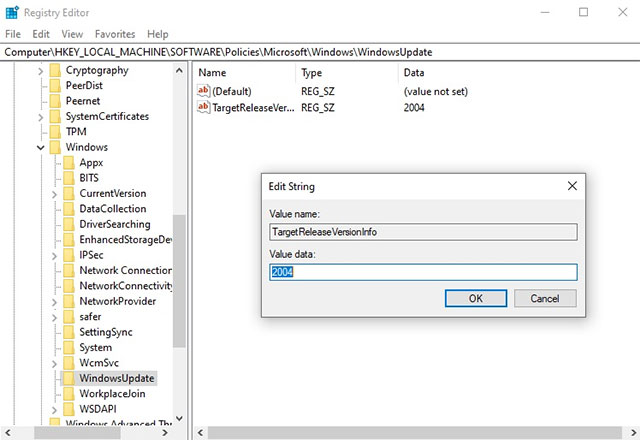
- Name for "TargetReleaseVersionInfo" and enter the Windows 10 version number as the value.
You can also enable this feature using PowerShell. To defer updates using PowerShell, run the command with the following syntax:
reg add HKLMSOFTWAREPoliciesMicrosoftWindowsWindowsUpdate /f /v TargetReleaseVersionInfo /t REG_SZ /d XXXX In the command syntax above, you need to replace "XXXX" with the version of Windows 10 you want to continue using.

This feature will be very useful when a new update is forced to install on your device, or you have to delay the update to upgrade your device. For example, if you are on version 1903 and do not want to upgrade to version 2004, you can enter the value "1903", to stay on version 1903, or enter "1909", to be updated to version 1909.
5. Block Windows 10 updates in regedit
You enter regedit in the search box, press Enter to open the registry window. Copy and paste the following link into the address bar just below the File|Edit|View|Favorites|Help menu:
HKEY_LOCAL_MACHINESoftwarePoliciesMicrosoftWindowsWindowsUpdateAU 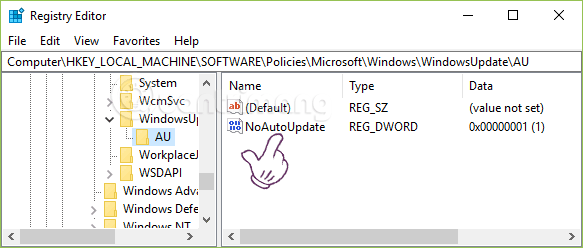
Double click NoAutoUpdate, in Value data, you enter 1 and then press OK same picture:
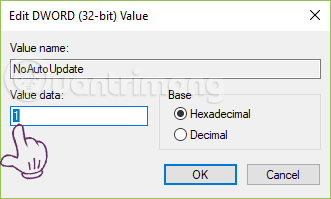
After completion the value of NoAutoUpdate will now be 0x00000001(1). If you want to let Windows 10 update automatically again, change the Value data value in the step above to 0.
6. Pause Windows Update on Windows 10 via Settings
This way to turn off Windows 10 updates is only temporary, allowing you to postpone the update to a more suitable time, rather than turning off the update completely. The maximum delay time is about 30 days each time.
You enter Windows Update settings into the search bar.
The Windows Update interface opens, you find Advanced options:
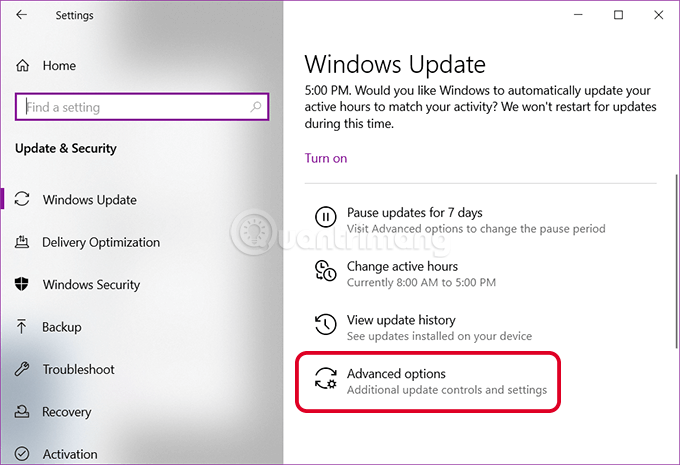
Find Pause updates > Pause until > you choose date want to update Windows 10.
Then return to the Windows Update interface, you see a message that the update has been postponed to the date you selected as successful:
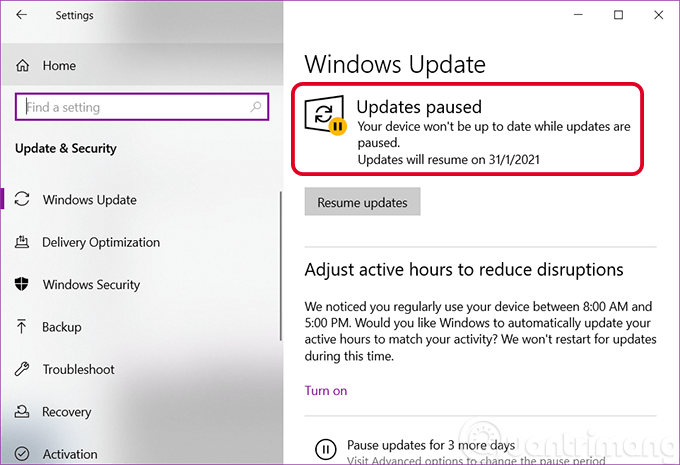
7. Turn off Windows 10 peer-to-peer updates
Another fairly new feature in Windows 10 is the system that allows updates through peer-to-peer (p2p) computers. It is roughly understood like this: when updating, a computer will be considered a "server", and other peers will update via that "server". This will help users save bandwidth, and updates will also be faster than downloading directly from the Internet. And to turn off this type of update, please click on the link Choose how updates are delivered:
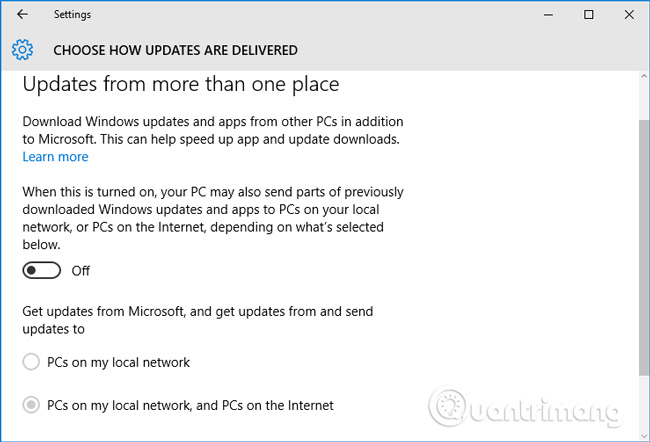
Switch mode On Fort Off.
8. Postponing Updates on Windows 10
This way takes advantage of the Metered Connection feature, which only applies when you are on a wifi network. Simply put, turning the Wifi network into a data-restricted network, causing Windows 10 to postpone updates until you switch to an unlimited network.
To enable the option Set as metered connection, Please follow these steps:
1. On your Windows 10 computer, open the Start Menu.
2. Go to Settings.
3. When the window Settings open, click Network & Internet.
4. Click WIFI in the left pane.
5. Now click Manage known networks.
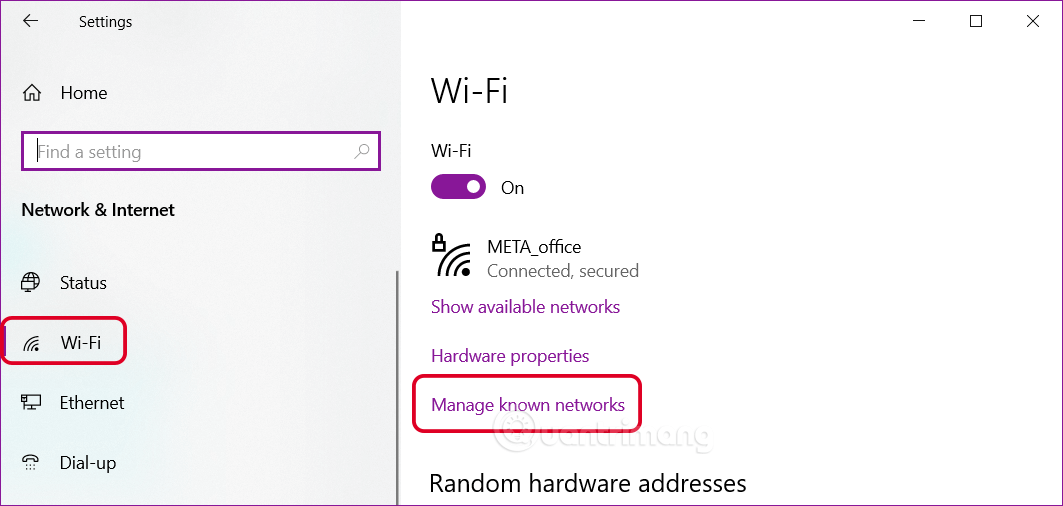
6. Click on the wireless connection name > click the . button Properties.
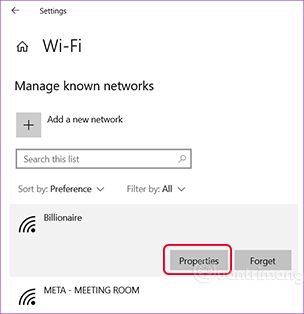
7. Now, scroll down to find the heading Metered Connections.
8. Then turn on the . button Set as metered connection.
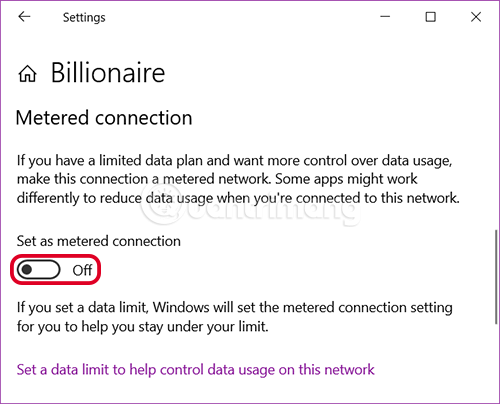
This way, you can pause Windows 10 updates for a while in case you've run out of monthly usage.
9. Block specific Windows 10 updates
On the Windows website there is a "show or hide updates" tool that allows users to disable or hide specific Windows 10 updates. You just need to download this tool and install it. Follow the instructions and disable problematic updates.
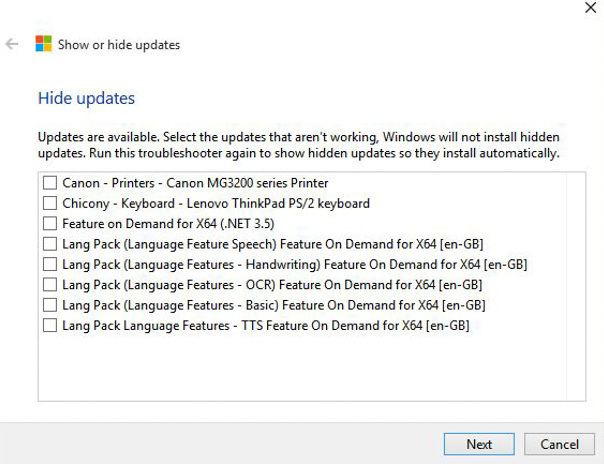
10. How to block Windows 10 from updating to Windows 11
Now, when Windows 11 is released and exists in parallel with Windows 10, in addition to the need to turn off Windows 10 updates, many users also want to block Windows 10 from updating to Windows 11. How to block Windows 10 from updating to Windows 11 is also not available. Anything complicated, you can do it easily by following these steps:
Method 1: Use Regedit Editor
Step 1: Press Windows + CHEAP to open Run then type regedit and press Enter.
Step 2: In Registry Editor you find the following key:
ComputerHKEY_LOCAL_MACHINESOFTWAREMicrosoftWindowsUpdate Step 3: Right click in the space on the right hand side then select New > DWORD (32-bit) Value then name this value TargetReleaseVersion and assign it the value first.
Step 4: Right click in the space on the right hand side then select New > String Value then name this value TargetReleaseVersionInfo and assign it the value 21H1.
Step 5: Restart the machine for the changes to take effect. If you need to update to Windows 11 you just need to remove two values TargetReleaseVersion and TargetReleaseVersionInfo done.
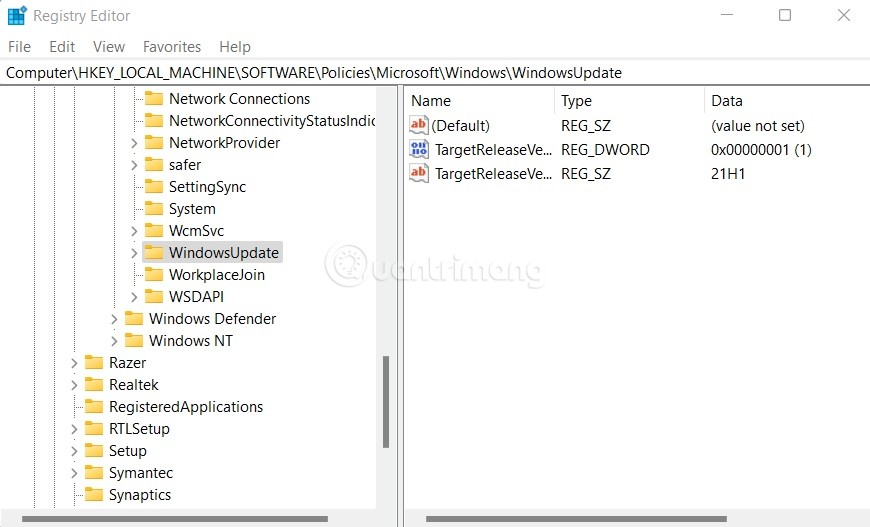
Method 2: Use Group Policy
If you use Windows 10 Pro, you can also use it Group Policy to block updates to Windows 11. You go to Local computer policy > Computer configuration > Administrative models > Windows components > Windows update > Windows Update for Business. Next, double-tap Select the target feature upgrade version choose 21H1 and press OK then restart the machine.
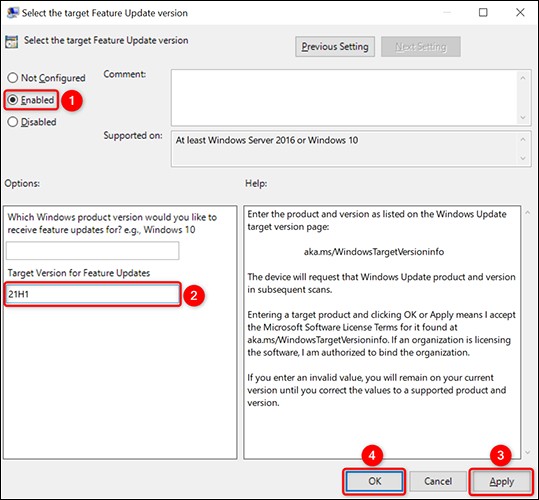
To continue updating to Windows 11, simply repeat the steps above but select 21H2 instead 21H1.
Check out some more articles below:
Good luck!
Source link: How to turn off Windows Update on Windows 10
– https://techtipsnreview.com/
How to Turn Off Windows Update in Windows 10
Source: https://techtipsnreview.com/how-to-turn-off-windows-update-on-windows-10/
0 Response to "How to Turn Off Windows Update in Windows 10"
Post a Comment